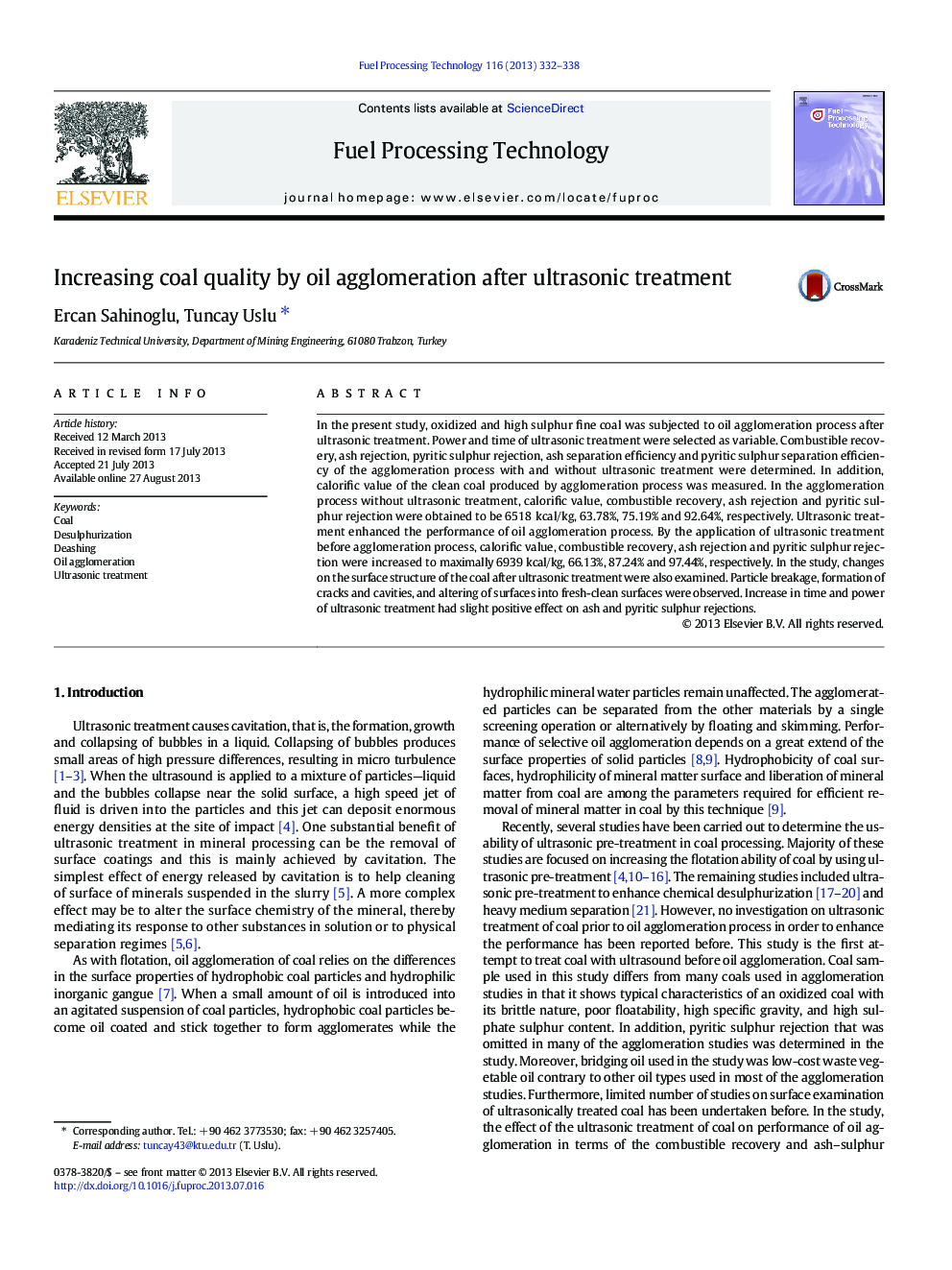| Article ID | Journal | Published Year | Pages | File Type |
|---|---|---|---|---|
| 6657400 | Fuel Processing Technology | 2013 | 7 Pages |
Abstract
In the present study, oxidized and high sulphur fine coal was subjected to oil agglomeration process after ultrasonic treatment. Power and time of ultrasonic treatment were selected as variable. Combustible recovery, ash rejection, pyritic sulphur rejection, ash separation efficiency and pyritic sulphur separation efficiency of the agglomeration process with and without ultrasonic treatment were determined. In addition, calorific value of the clean coal produced by agglomeration process was measured. In the agglomeration process without ultrasonic treatment, calorific value, combustible recovery, ash rejection and pyritic sulphur rejection were obtained to be 6518Â kcal/kg, 63.78%, 75.19% and 92.64%, respectively. Ultrasonic treatment enhanced the performance of oil agglomeration process. By the application of ultrasonic treatment before agglomeration process, calorific value, combustible recovery, ash rejection and pyritic sulphur rejection were increased to maximally 6939Â kcal/kg, 66.13%, 87.24% and 97.44%, respectively. In the study, changes on the surface structure of the coal after ultrasonic treatment were also examined. Particle breakage, formation of cracks and cavities, and altering of surfaces into fresh-clean surfaces were observed. Increase in time and power of ultrasonic treatment had slight positive effect on ash and pyritic sulphur rejections.
Related Topics
Physical Sciences and Engineering
Chemical Engineering
Chemical Engineering (General)
Authors
Ercan Sahinoglu, Tuncay Uslu,
